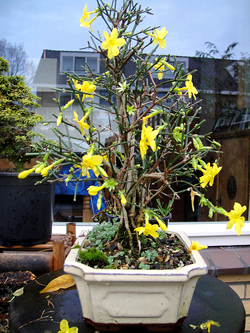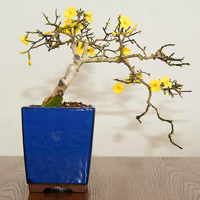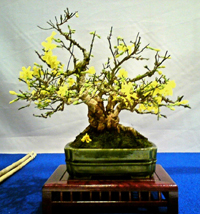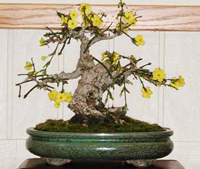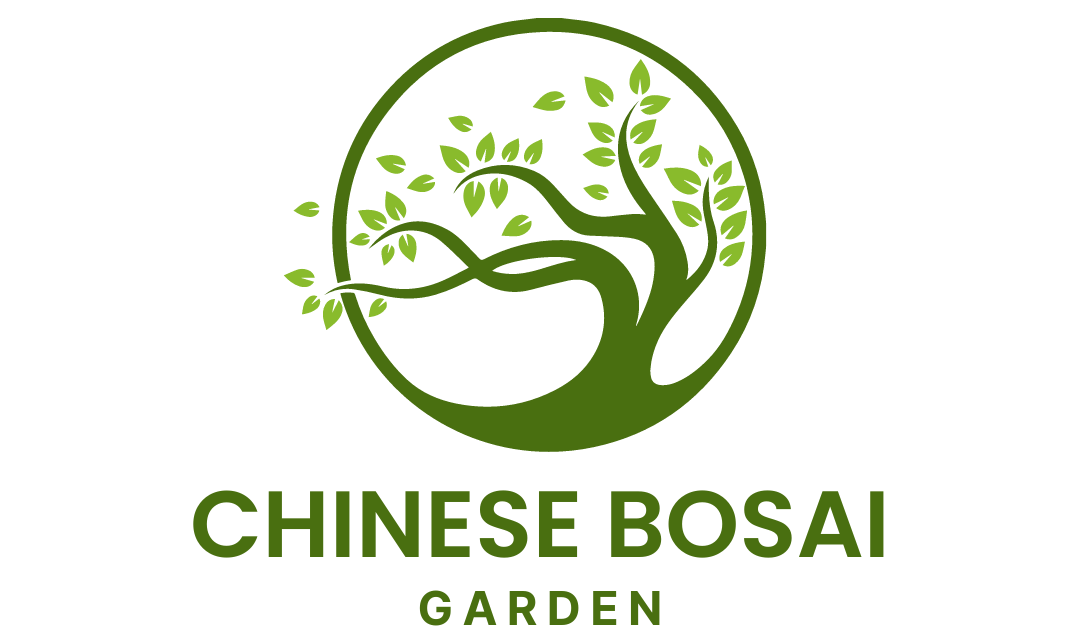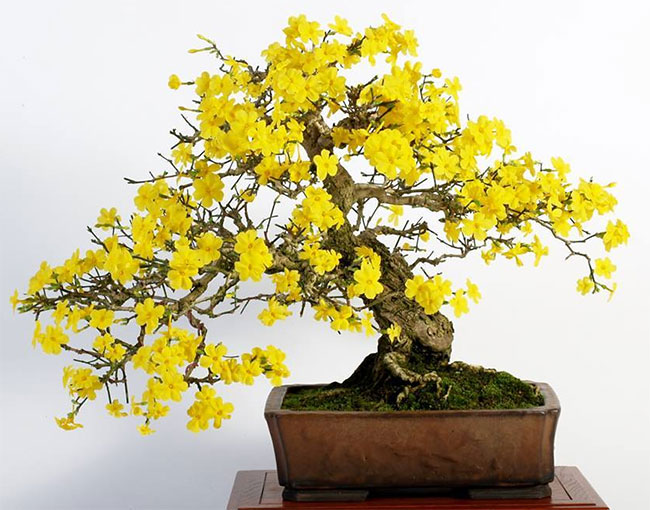
The Winter Jasmine Bonsai Tree, scientific name Jasminum nudiflorum, is native to western China. It is a cascading shrub with woody brown square branches. The stems are thin and bright green color when young but thicken quite heavily as they get older.
The unique characteristic of this plant is its gorgeous yellow flowers that bloom from fall until late winter or even early spring. It provides a nice splash of color during cold winter months.
One of the reasons why it’s such a popular bonsai is its durability. You can easily use wires and it can spend the winter outside without any protection.
Additional Information
Family: Oleaceae (olive Family)
Scientific name: Jasminum nudiflorum
Common Names: Winter Jasmine, Hardy Jasmine, Yellow Winter Jasmine.
Origin: Native to western China.
Appearance: It is a mounding, spreading, cascading shrub with slender stems that are bright green in color when young but turn brown and woody as they get older.
Branches give off a good old-aged appearance. Lustrous emerald-green compound leaves with tree leaflets appear on the square branches after blooming.
Flowering: From January to March it produces interesting dark reddish buds that unfold into bright, unscented, funnel-shaped yellow blooms.
Woody brown branches create a neutral backdrop that intensifies the bright yellow of the flowers. They look especially beautiful under some snow.
Outdoor/Indoor Use: Outdoors.
Light Requirements: Full sun or shade. Although it prefers full sun, it should be in the shade during hot summer months. Full sun is needed for maximum blooms.
Water Requirements: It requires daily watering during the growing season. Needs less water during winter months. Never allow the soil to dry out completely.
Pruning/Training: Pinch and pruning should be done in spring immediately after the blooming is over. Pinch new shoots to the fist pair of leaves with finger and thumb after a couple of leaves have grown. This will help the buds to flower. Woods will heal faster during the growing season. Use wires if required.
Bonsai Style: You can use any style except for straight-trunk, literati, and broom. The most popular styles for this tree are informal and cascade.
Fertilizing: Feed it with well-balanced fertilizer every two weeks from after the blooming is over until the beginning of fall.
Repotting: Needs to be repotted every other year in the fall. Use regular bonsai soil mix.
Hardiness: It grows best in USDA Zones 6 – 9. It is a drought and cold-tolerant tree.
Insects and Diseases: Scale, aphids, leaf spots.
Propagation: By layering or from cuttings.
